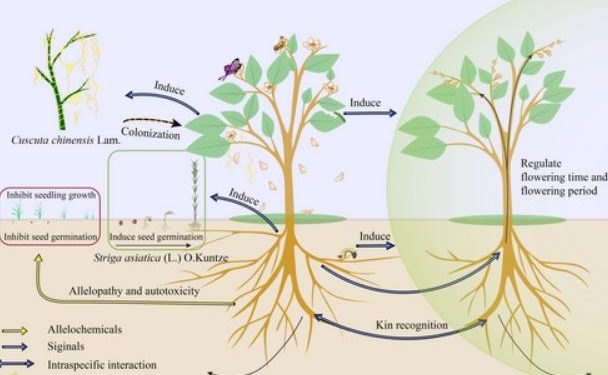Chemical interactions in plants mainly involve allelopathy and allelobiosis. The term ‘allelobiosis’ is relatively new and denotes interactions in which exchanges of chemical signals between a receiving plant and a responding plant affect growth and responses to herbivores and other enemies . Allelobiosis is a form of chemical communication, in which a plant releases a chemical signal that is received through air or water, leading to a physiological or behavioural response elsewhere. Chemical communication was first recorded among animals by F. Rabelais, then in 1959 A. F. J. Butenandt identified the first animal pheromone, bombykol . Subsequently, research on chemical communication between plants and insects has expanded, chemical communication among plants was also described , then rhizobia were shown to be encouraged by flavonoids from legumes.
Allelopathy and allelobiosis are widespread in ecosystems, and beneficial to individuals and populations. However, toxicity of certain plants and long-term monocropping can lead to reduced crop yields and quality , infestations and plant diseases . Insect pests and weeds also have serious effects on agroecosystems , and allelobiosis may be one such phenomenon.
Reference: Han, M., Yang, H., Huang, H., Du, J., Zhang, S. and Fu, Y. (2024), Allelopathy and allelobiosis: efficient and economical alternatives in agroecosystems. Plant Biol J, 26: 11-27. https://doi.org/10.1111/plb.13582
Error




